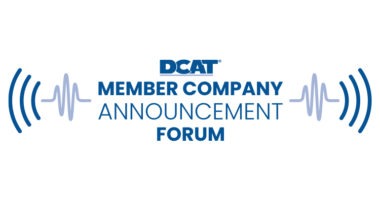Moving to the Next Level in Sourcing and Supplier Management
Pharmaceutical companies and suppliers face critical issues as they seek to optimize their manufacturing supply chains, with strategies for effective risk management, supplier relationship management, and adoption of digital technologies topping the list.
So what are some crucial questions facing pharma companies and suppliers? Is the category management of today optimal for the end-to-end supply chains of tomorrow? How can pharma companies balance cost and reliability of supply in their sourcing decisions? Do supplier relationships truly deliver value and meet all-important risk criteria? The answers to these questions are central to the decision-making of sourcing, procurement, and supply management executives and suppliers. As the industry looks to the upcoming DCAT Sharp Sourcing 2015, here is a perspective on the challenges and more importantly, the solutions for pharma companies and suppliers.
Supplier risk management: the industry imperative
Risk management, without question, is the single most important issue facing pharma companies and suppliers. Although monitoring and mitigating supplier risk has always been part of good business practice, regulatory requirements and rising expectations, from both internal and external stakeholders, have made effective risk management an imperative. Increased globalization and more complex and elongated manufacturing supply chains, including extended external manufacturing networks, have made effective supplier risk management a strategic and operational priority. A 2015 PwC survey found that almost 75% of more than 1,200 executives surveyed felt that risks to their companies were on the rise, but that their companies were generally not meeting these increased risks with improved risk management. So what can companies do, and what constitutes effective supplier risk management?
Senior executives, from both within the pharma industry and outside the pharma industry, will share best practices for risk management for supplier selection, qualification, and evaluation and related metrics and implementation strategies at DCAT Sharp Sourcing 2015, which will be held July 16 in New Brunswick, New Jersey. A Supply Assurance and Risk Management Roundtable will feature perspectives from Johnson & Johnson (Joseph Agresta, Vice President, Johnson & Johnson Supply Chain Procurement Excellence), Pfizer (Ron Perry, Vice President, Global Procurement, Pfizer Global Supply and Global Operations), and DuPont (Sidney Goldberg, PhD, Sourcing Compliance Manager) among others.
|
|
The responsibility for effective risk management resides not only with pharma companies but also with their suppliers. For suppliers, CDMOs, and CMOs, understanding their pharma customers’ expectations and how the supply of direct materials and services meets the strategic and operational requirements of their customers, including their risk criteria, is crucial. To be a true partner, suppliers are tasked with not only meeting the quality bar for their own products and services, but also of their suppliers. For effective risk management, CDMOs, CMOs, and suppliers must consider their own sourcing activities for raw materials and be able to demonstrate the quality and reliability of the materials in their supply chains to their pharma customers. Effective risk management is a competitive differentiator, and the industry experts at DCAT Sharp Sourcing 2015 will provide insight into how companies can meet those challenges.
Supplier relationship management: moving to the next level
Proactive supplier relationship management (SRM) is a critical element for assuring reliability and quality of supply, but how can SRM be taken to the next level? A recent A.T. Kearney Assessment of Excellence in Procurement study, a cross-industry analysis of more than 185 companies, found that procurement organizations of leading companies achieve double the measurable cost reduction versus other companies while also driving competitive advantage through supplier-driven innovation and risk management.
So how effective is your company, whether a pharma company or supplier, in delivering value? What are the strengths and weaknesses of your SRM, and how does your company measure comparative to other companies? Is your company adopting needed technologies and tools to enable optimal SRM? For pharma companies, do you truly innovate with your suppliers, and suppliers, can you meet the innovation challenge?
Leading experts will address these pressing questions at DCAT Sharp Sourcing 2015. In specialized, custom-designed forums for buyers and suppliers, senior executives from Bristol-Myers Squibb (Robert P. Discordia, PhD, Global Procurement, Pharmaceutical Operations & Development), Merck & Co. (Scott Laird, Executive Business Director, External Manufacturing), Biogen (Michael Humora, PhD, Technical Development Fellow, Chemical Process Research and Development), and Shire (Will Tilton, Vice President, US Supply Chain) as well as industry experts from PricewaterhouseCoopers (PwC) and Vantage Partners will share best practices in SRM, category management, sourcing (single versus dual sourcing), value-based metrics for supplier performance, and pharma procurement.
|
For pharma companies, do you truly innovate with your suppliers, and suppliers, can you meet the innovation challenge? |
Also, Harvard Business School Professor Gary Pisano, a leading expert on competitive strategies for manufacturing, outsourcing, and technology management, will provide case studies in supplier innovation and discuss the barriers and solutions for achieving supplier innovation. Dr. Pisano has provided case studies on leading companies within the pharma industry (Merck, Eli Lilly, and Pfizer,) as well as from companies outside the industry (Amazon, BMW, Fiat-Chrysler, IBM, Intel, Jet Blue, Virgin Group).
Digital technologies are playing an increasingly important role in SRM, but what tools are important for pharma sourcing and procurement? Are technologies in use in consumer markets or in the general marketplace really relevant for the pharma industry, and if so, how? Two senior members from Accenture‘s Social Media & Collaboration Practice, Robert Harles and Aneesh Desikan, will discuss how crowdsourcing can be used in pharma sourcing and procurement.
For pharma companies, CDMOs, CMOs, and suppliers, DCAT Sharp Sourcing 2015 is an unique opportunity to gain high-level expertise from senior executives and leading authorities on the solutions to today’s most difficult challenges in sourcing, procurement, and supply management. Additional information on DCAT Sharp Sourcing 2015, including how to register, may be found here.




